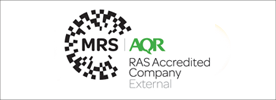
Market research plays a pivotal role in understanding the intricate needs, behaviours, and perceptions of patients, healthcare providers, and other stakeholders. This knowledge is crucial for developing effective strategies, optimising patient care, and shaping the future of healthcare delivery. To navigate this complex landscape, researchers employ two fundamental approaches: quantitative and qualitative methodologies. Each methodology offers unique strengths and insights, providing a comprehensive understanding of the healthcare landscape.
The interplay of quantitative and qualitative methodologies paints a holistic picture of the healthcare landscape, revealing both the overarching trends and the individual experiences that shape the healthcare experience. By harnessing the strengths of both approaches, researchers can gain a comprehensive understanding of the complex dynamics at play, enabling them to develop effective strategies that address the needs of patients, healthcare providers, and the broader healthcare system.
- Quantitative Methodology: Unveiling the Power of Numbers
- Qualitative Methodology: Delving into the Depths of Human Experience
- Comparing Quantitative and Qualitative Methodologies: A Tale of Two Approaches
- Bridging the Gap: Mixed-Methods Research
- Understanding the Distinct Characteristics of Respondents
Quantitative Methodology: Unveiling the Power of Numbers
Quantitative methodology in healthcare market research focuses on collecting and analysing numerical data to uncover patterns and trends. This approach utilises structured methods such as surveys, questionnaires, and clinical trials to gather quantifiable data from a large sample population. The strength of quantitative methodology lies in its ability to provide generalisable results and facilitate statistical analysis, enabling researchers to identify statistically significant relationships between variables.
When to Use Quantitative Research in Healthcare:
- Exploring Patient Experiences and Perceptions: To comprehend the nuances of how patients experience a particular treatment or healthcare service
- In-depth understanding of Healthcare Providers' Behaviour: To uncover the motivations and challenges faced by healthcare professionals in delivering care
- Developing Patient Personas for Better Targeting: Creating detailed profiles of patient segments to tailor healthcare marketing and interventions effectively
Qualitative Methodology: Delving into the Depths of Human Experience
In contrast to the numerical focus of quantitative methodology, qualitative methodology delves into the depths of human experience, exploring the underlying motivations, perceptions, and behaviours of individuals. This approach utilises in-depth interviews, focus groups, and observation studies to gather non-numerical, descriptive data. The strength of qualitative methodology lies in its ability to provide a rich understanding of individual experiences, uncover hidden insights, and identify the 'why' behind healthcare decisions.
- Collecting Large-Scale Data for Statistical Analysis: When you need a substantial amount of data to draw meaningful statistical inferences
- Measuring the Prevalence of Health Issues or Treatment Effectiveness: To determine the scope and impact of a particular health problem or intervention
- Assessing the Impact of Healthcare Policies or Interventions: To evaluate the efficacy of healthcare policies, interventions, or programs
Comparing Quantitative and Qualitative Methodologies: A Tale of Two Approaches
While both quantitative and qualitative methodologies contribute significantly to healthcare market research, they differ in their approach to data collection, analysis, and outcomes. Quantitative methodology emphasises numerical data, statistical analysis, and generalisability, while qualitative methodology focuses on non-numerical data, in-depth understanding, and contextual insights.
| Feature | Quantitative Methodology | Qualitative Methodology |
|---|---|---|
| Data Type | Numerical, Statistical | Non-numerical, Descriptive |
| Data Collection | Surveys, Questionnaires, Clinical Trials | Interviews, Focus Groups, Observation Studies |
| Analysis | Statistical Analysis, Generalisability | Interpretation, Thematic Analysis |
| Outcomes | Identify patterns, trends, and relationships | Understand motivations, perceptions, and experiences |
Bridging the Gap: Mixed-Methods Research
While qualitative and quantitative methodologies have their unique strengths, the true power of healthcare market research lies in the synergistic application of both quantitative and qualitative methodologies. It's not a matter of one versus the other, but rather how these two methods can work in harmony to deliver a more profound understanding of the healthcare landscape. This approach is aptly named mixed-methods research, where both qualitative and quantitative data collection and analysis seamlessly merge to provide invaluable insights. The result is a holistic comprehension of patient needs, behaviours, and perceptions, ultimately paving the way for more effective strategies and improved healthcare outcomes.
Each of these research methodologies serves a unique purpose in the healthcare market research field. Quantitative techniques excel in evaluating patient satisfaction, gauging treatment efficacy, and tracking disease prevalence. Meanwhile, qualitative methods delve into the intricacies of patient experiences with specific treatments, unearth barriers to healthcare access and shed light on unmet needs.
When to Use Quantitative Research in Healthcare:
- Comprehensive Understanding: Mixed-methods research provides a more complete and holistic understanding of a research problem. It allows researchers to explore the depth and nuances of a subject through qualitative data while also obtaining broader insights and patterns through quantitative data
- Confirmation and Validation: Qualitative findings can be used to validate or explain quantitative results, enhancing the reliability and validity of the research. This cross-validation increases confidence in the conclusions drawn.
- Complex Problem Solving: It is well-suited for investigating complex research questions that cannot be fully addressed by either method alone. Mixed-methods research allows researchers to tackle multifaceted issues by combining the strengths of both approaches.
Understanding the Distinct Characteristics of Respondents
The disparities in respondent profiles between quantitative surveys and qualitative interviews are rooted in the unique attributes of each data collection method and the expectations placed on participants. These differences are influenced by a multitude of factors, encompassing preferences for data format, motivation, time commitment, comfort with interaction styles, data depth, sample size considerations, and research objectives. Respondents in quantitative surveys favour structured, closed-ended questions and succinct responses, while their counterparts in qualitative interviews thrive on open-ended, in-depth dialogues. Their motivations, areas of interest, and comfort levels play pivotal roles in determining the selection of their preferred research method, ultimately shaping the distinctive profiles of respondents in each approach.
Several factors contribute to the differences between respondents in quantitative surveys and qualitative interviews:
| Factor | Quantitative Surveys | Qualitative Interviews |
|---|---|---|
| Motivation | Respondents may be motivated by incentives or a desire to contribute to general knowledge | Respondents may be motivated by a desire to share their personal experiences and contribute to in-depth understanding |
| Time Commitment | Typically require less time commitment, making them more accessible to a broader range of respondents | Often involve a more significant time commitment, potentially limiting participation to those with more flexible schedules or a strong interest in the topic |
| Comfort Level | Offer a structured format that may appeal to respondents who prefer straightforward questions and responses | Require a higher level of comfort with open-ended discussions and sharing personal experiences |
| Response Depth | Tend to elicit concise, standardised responses suitable for quantitative analysis | Allow for in-depth, open-ended responses that provide rich qualitative data |
| Sample Size | Can accommodate larger sample sizes, allowing for broader generalisability | Typically involves smaller sample sizes due to the intensive nature of qualitative data collection |
| Data Analysis | Data can be analysed quantitatively, enabling statistical comparisons and trends | Data necessitate qualitative analysis, involving interpretation and thematic coding |
| Question Type | Predominantly employ closed-ended questions with fixed response options | Primarily utilise open-ended questions, providing flexibility for probing and follow-up |
| Representativeness | Aim for a representative sample, striving to reflect the broader population | Often focuses on purposive or convenience sampling, emphasising depth over representativeness |
Healthcare market research stands at the crossroads of data and human experience, weaving together quantitative and qualitative methodologies to uncover the intricate tapestry of patient needs, provider behaviours, and broader healthcare dynamics. This synergistic blend of methods plays a pivotal role in shaping the future of healthcare delivery, optimising patient care, and developing effective strategies.
The quantitative methodology, with its focus on the power of numerical data, excels in uncovering patterns and trends that drive healthcare research. This approach, characterized by structured surveys and clinical trials, appeals to a specific group of respondents who value structured, concise interactions, often motivated by incentives or a desire to contribute to general knowledge.
In contrast, the qualitative methodology delves into the depths of human experience, seeking to unearth the underlying "whys" behind healthcare decisions. Through in-depth interviews, focus groups, and observation studies, qualitative research attracts individuals who are eager to share their personal experiences, embrace open-ended discussions, and explore the intricate reasons guiding their actions.
Each methodology serves as a beacon for unique insights, ensuring a comprehensive understanding of the healthcare landscape. The disparities in respondent profiles, as previously discussed, underscore the intricate interplay between research methods and the preferences of those who engage in the research process.
The synergy between these methodologies creates a holistic portrait, capturing not only the overarching trends but also the individual experiences that shape the research journey. By harnessing the strengths of both approaches, researchers attain a profound understanding of the intricate dynamics at work, empowering them to devise strategies that cater to the diverse needs of patients, healthcare providers, and the broader healthcare ecosystem.
Are you interested in learning more about our qualitative and quantitative offerings?





